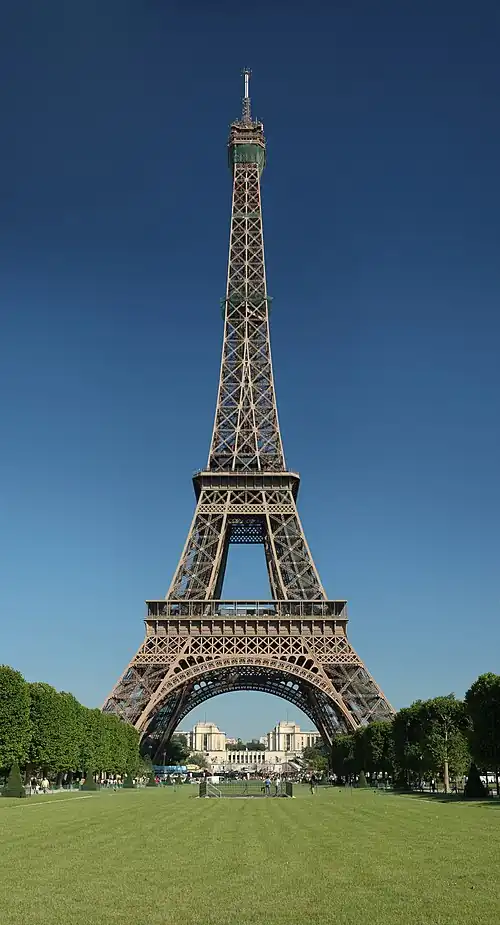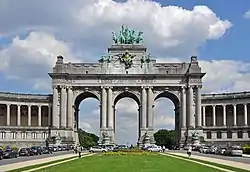
The Arcade du Cinquantenaire in Brussels, Belgium
%252C_Lucerne%252C_Switzerland.jpg.webp)
Kapellbrücke (Chapel Bridge), a covered bridge in Lucerne, Switzerland
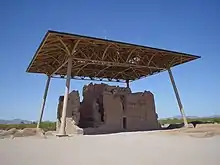
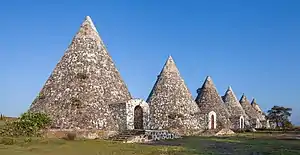
Silos in Acatlán, Hidalgo, Mexico

Transmission tower near Le Cluzeau, Saint-Romain, France
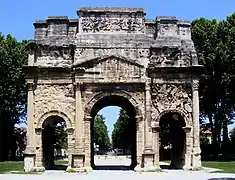
The Triumphal Arch of Orange, France
A nonbuilding structure, also referred to simply as a structure, refers to any body or system of connected parts used to support a load that was not designed for continuous human occupancy. The term is used by architects, structural engineers, and mechanical engineers to distinctly identify built structures that are not buildings.[1]
Examples
- Aerial lift pylons
- Aqueducts
- Avalanche dams
- Barriers[2]
- Blast furnaces
- Boat lifts
- Brick kilns
- Bridges[3] and bridge-like structures (aqueducts, overpasses, trestles, viaducts, etc.)
- Bus stops
- Canals
- Carports
- Chimneys and flue-gas stacks
- Coke ovens
- Communications towers
- Conservatories
- Covered bridges[3]
- Dams
- Docks
- Dolphins
- Electricity grids
- Fountains
- Ferris wheels
- Ferry slips
- Flumes
- Fortifications
- Fractionating towers
- Gates[2]
- Granaries
- Greenhouses
- Hayracks
- Hay barracks
- Headframes
- Infrastructures
- Landmarks
- Marinas
- Monoliths
- Megaliths
- Memorials
- Mounds
- Offshore oil platforms (except for the production and housing facilities)
- Oil depots
- Oil platforms
- Piers[3]
- Pitch
- Pyramids
- Radio masts and towers
- Railroads
- Ramadas
- Retaining walls
- Roller coasters
- Sheds
- Silos[3]
- Storage tanks
- Street lights[2]
- Street signs[2]
- Swimming pools[3]
- Structures designed to support, contain or convey liquid or gaseous matter, including
- Cooling towers
- Distillation equipment and structural supports at chemical and petrochemical plants and oil refineries
- Tank farms
- Thoroughfares
- Tombs
- Towers of some types
- Tramways and aerial tramways
- Transmission towers
- Triumphal arches
- Tunnels
- Underwater habitats
- Water towers[3]
- Wharves[3]
- Windmills
Exceptions
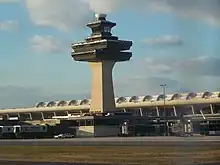
Dulles Airport control tower
Some structures that are occupied periodically and would otherwise be considered "nonbuilding structures" are categorized as "buildings" for life and fire safety purposes:
- Aviation control towers
- Cruise ships
- Factories
- Kiosks
- Lighthouses
- Outhouses
- Power stations
- Refineries
- Warehouses
See also
References
- ↑ International Code Council (2003). 2003 International Building Code. International Code Council. ISBN 1-892395-79-7.
- 1 2 3 4 Prasad, Deo K.. Designing with solar power: a source book for building integrated photovoltaics (BiPV). Mulgrave, Vic.: Images ;, 2005. Print.
- 1 2 3 4 5 6 7 Kunreuther, Howard, and Richard J. Roth. Paying the price the status and role of insurance against natural disasters in the United States. Washington, D.C.: Joseph Henry Press, 1998. Print.
This article is issued from Wikipedia. The text is licensed under Creative Commons - Attribution - Sharealike. Additional terms may apply for the media files.
